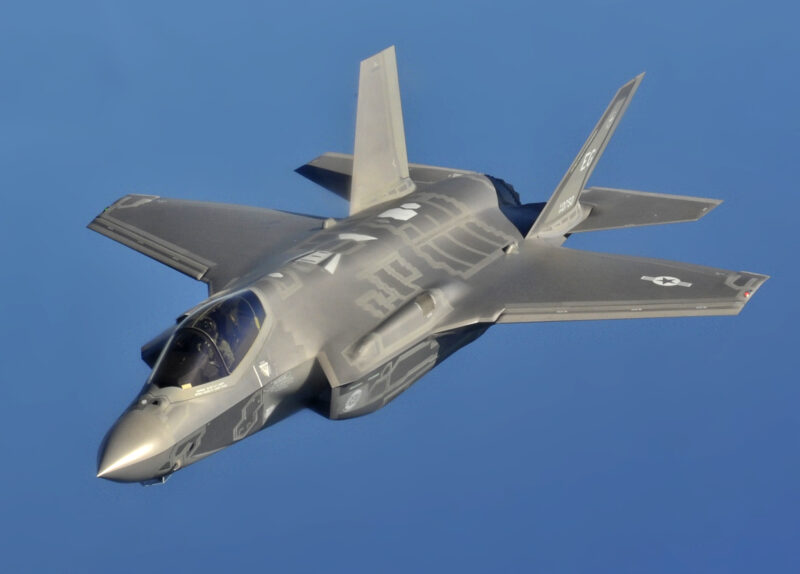Europe and Canada Explore Alternatives to U.S.-Made Fighter Jets Amid Shifting Global Alliances

Questions are growing in both Canada and Europe regarding the continued reliance on U.S.-made fighter jets like the F-35 Joint Strike Fighter. With strategic concerns mounting over changing U.S. foreign policies under President Donald Trump, many Western nations are rethinking their defense procurement strategies, especially as relations with the U.S. grow uncertain.
Shifting Focus in Canada and Europe
In under two months, U.S. President Trump has fundamentally altered the direction of U.S. foreign policy, leaving NATO members and other allies questioning whether the U.S. will continue to honor its commitment to defend its European partners if Russia escalates tensions. Trump’s overtures to Moscow, along with his suspension of most U.S. foreign aid, have caused concerns in NATO countries that their defense strategies might be jeopardized.
This change in dynamics is affecting U.S. fighter jet sales, particularly the Lockheed Martin F-35 and other high-end U.S. military aircraft like the F-16. As the war in Ukraine continues, it’s clear that Eastern European NATO members still possess large stockpiles of outdated Soviet-era aircraft, which lack compatibility with Western weaponry. The long-term strategy of replacing these aging aircraft with advanced U.S. systems like the F-16 and F-35 is now being questioned.
Canada’s Rethink of U.S. Fighter Jets
In Canada, President Trump’s trade war and rhetoric about making Canada the “51st U.S. state” has pushed new Prime Minister Mark Carney to reconsider Canada’s commitment to purchasing F-35 fighter jets. Canada has long been a partner in the F-35 program, but now, Defense Minister Bill Blair has been tasked with reviewing the decision in light of the changing geopolitical climate. This review may lead to a shift away from the U.S. defense system.
Portugal Joins the Reconsideration
In Portugal, the outgoing defense minister recently commented that the “recent positions” taken by Washington forced a reevaluation of the country’s purchase of F-35s. As Portugal explores alternatives to replace its F-16s, it joins other NATO nations in questioning their dependency on U.S.-made defense systems.
The F-35: Expensive and Controversial
The F-35 Joint Strike Fighter was designed as a versatile, stealthy, and highly capable aircraft. However, its steep price—about $85 million per jet, rising to $150 million when considering infrastructure and spare parts—has caused concern among nations already questioning the value of their investments in U.S. defense technology.
With over 1,100 F-35s produced globally, the F-35B, capable of vertical takeoff and landing, has emerged as one of the most expensive weapons systems the U.S. has ever produced, with lifetime costs expected to exceed $1.7 trillion. Despite the high costs, the U.S. has relied on international sales to offset these expenses.
Concerns Over ‘Kill Switch’ and Tech Control
The Trump administration’s stance on international defense issues, particularly the Russia-Ukraine conflict, has raised concerns that the U.S. could use its control over the F-35’s technology as leverage in future disputes. Critics fear that the U.S. might embed a “kill switch” in the aircraft’s complex software, giving Washington the ability to disable these jets in future conflicts.
The Pentagon has rejected this claim, stating that there is no “kill switch” in the F-35, and that all customers will receive the full functionality and support they require.
European Alternatives Gaining Momentum & Defense Industry Poised for Growth
Several European-made jets are gaining attention as alternatives to the F-35. The Saab Gripen, Eurofighter Typhoon, and Dassault Rafale are all contenders, with the Saab Gripen being notably cheaper than the F-35. However, these aircraft lack the same level of stealth capabilities as the F-35, making them less suited for some of the advanced missions the F-35 can undertake.
As European countries reconsider their reliance on U.S. defense contractors, French President Emmanuel Macron is leading efforts to persuade European allies to switch to European-made defense systems. This includes offering Rafale fighters as an alternative to the F-35.
Impact on U.S. Defense Contractors
The potential for European countries to increase their production of indigenous fighter jets would significantly affect U.S. defense contractors, including Lockheed Martin, which produces the F-35. With nations like Canada, Portugal, and others reconsidering U.S. aircraft purchases, U.S. defense companies may face a serious decline in international sales in the 100s of billions of dollars.
Looking Ahead: The Future of NATO’s Defense Strategy
The shifting dynamics in NATO’s defense strategy could ultimately reshape the global defense industry. As European nations explore alternatives to U.S. aircraft, the question remains: Can Europe develop and maintain its own advanced defense systems without relying on U.S. technology? This new geopolitical reality is sure to impact the balance of power and defense alliances in the coming decades.
Related news: https://suspicious-zhukovsky.67-21-117-18.plesk.page/?s=f-35, https://suspicious-zhukovsky.67-21-117-18.plesk.page/category/air-travel-business/aircraft-finance/
Sources: AirGuide Business airguide.info, bing.com, Associated Press
